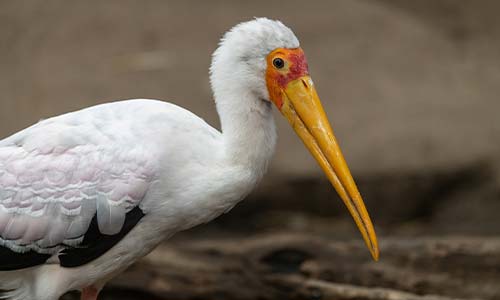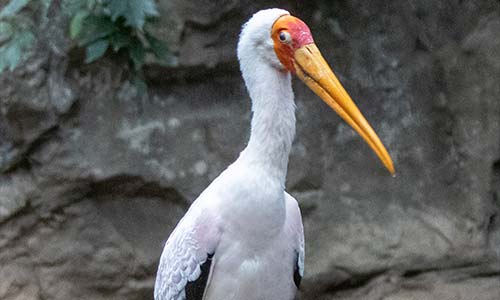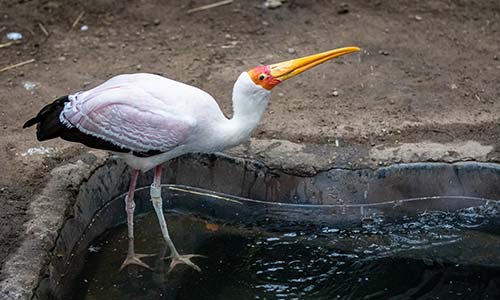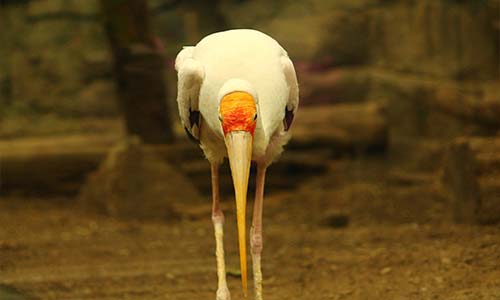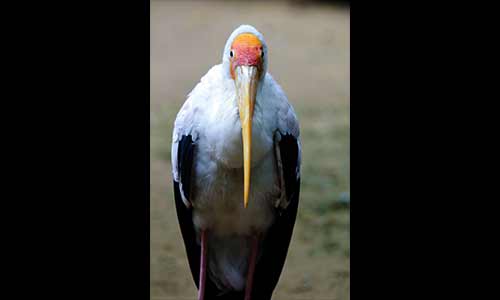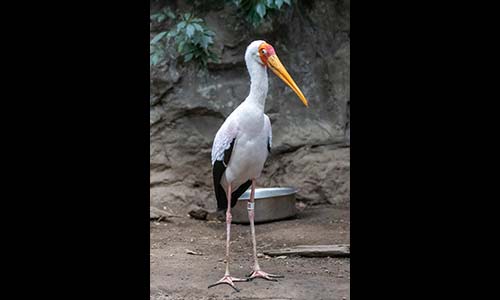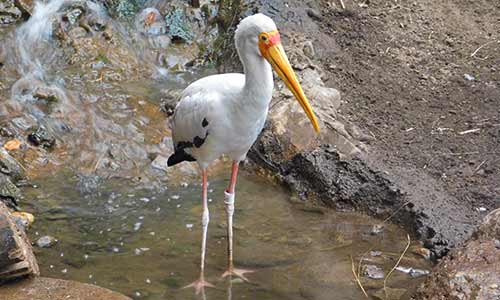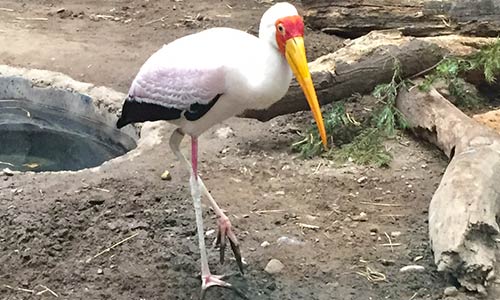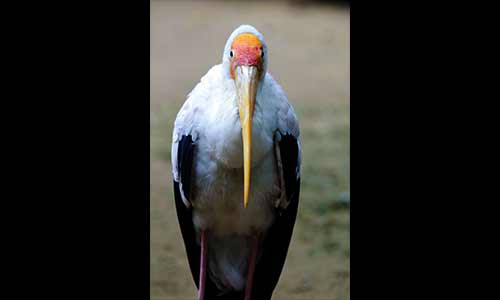Yellow-Billed Stork
Mycteria ibis
About the Yellow-Billed Stork

Geographic Range:
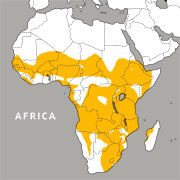
Class: Aves
Order: Ciconiiformes
Family: Ciconiidae
Genus: Mycteria
Species: ibis
The yellow-billed stork is native to Africa and named for its bright yellow bill, which makes for a colorful contrast with the stork’s red face. The bill is long and narrow, allowing the stork to catch almost all of its food in the water. Storks invented a technique of stirring the water with one foot to disturb and flush out prey. They then poke their heads in the water and snap their bills, catching small prey like fish, insects, frogs and crustaceans.
Appearance:
- Bright red face with a vibrant yellow bill, long pinkish legs, black under wings and tail
- Height: Just over 3 feet high
- Weight: From 4 to 5 pounds
Diet: Crustaceans, small fish, frogs, insects and worms
Range: Wetlands south of the Sahara to northern South Africa. Also found in western Madagascar.
You Can Find This Animal in the Tropical Forest
Look Up!
Want to spot this bird? Look up! These storks fly freely through the Tropical Forest.
You might also like
At Franklin Park Zoo:
At Stone Zoo:

